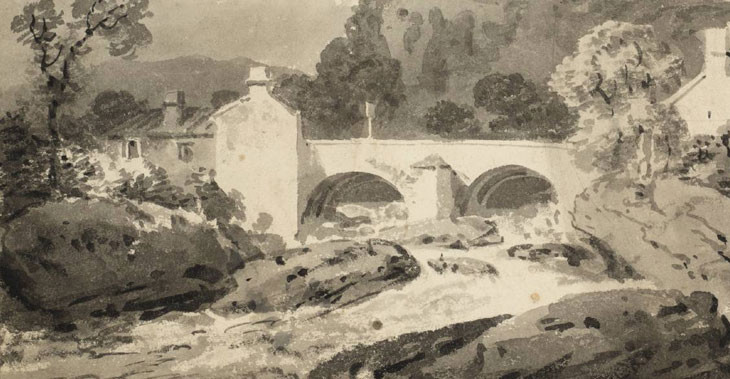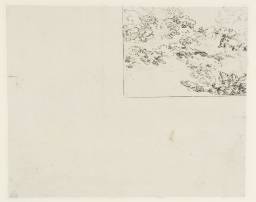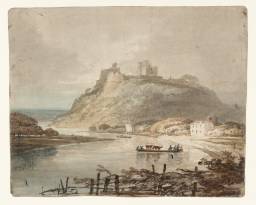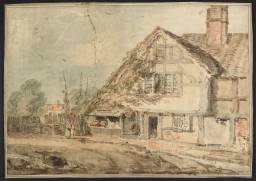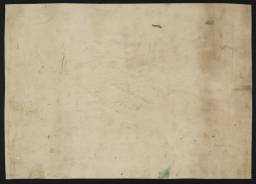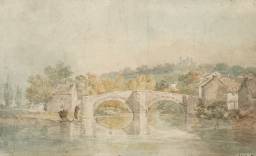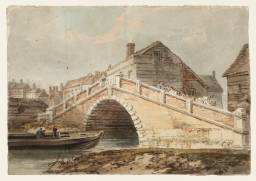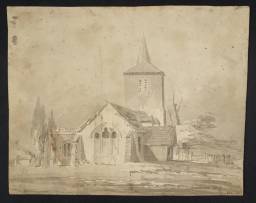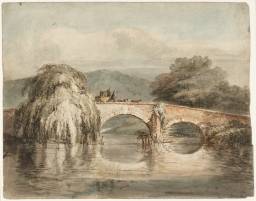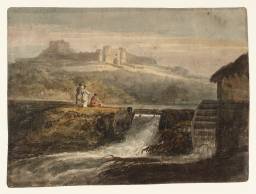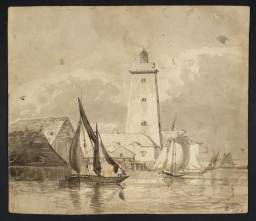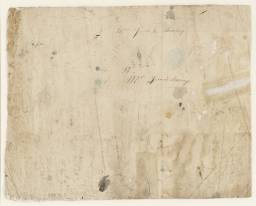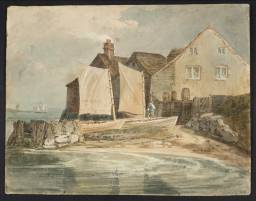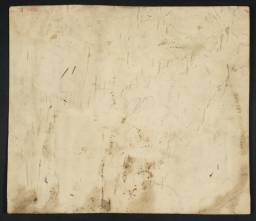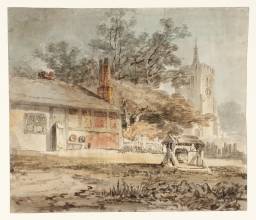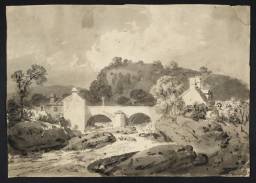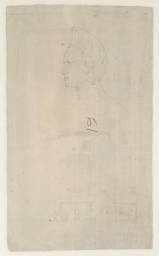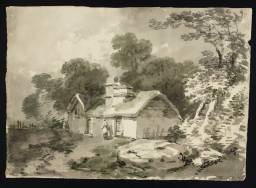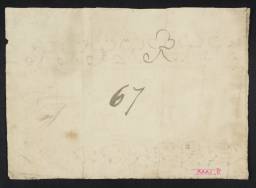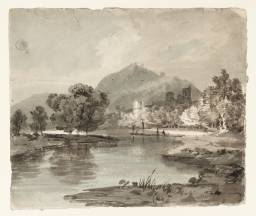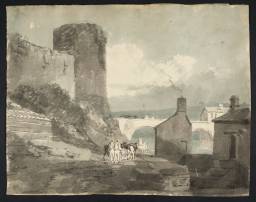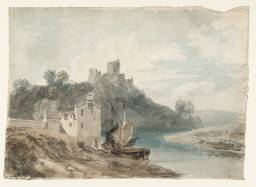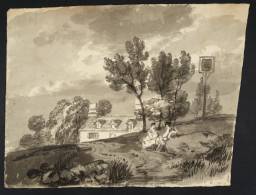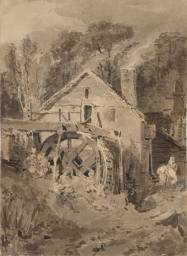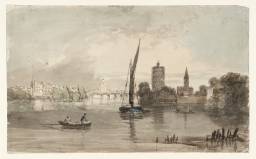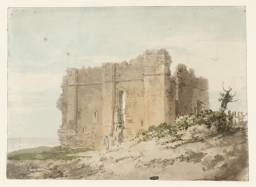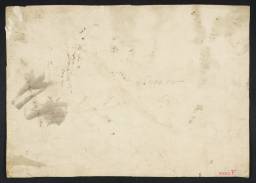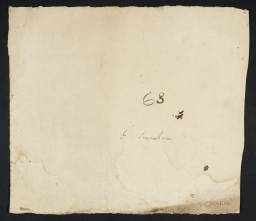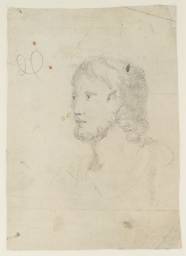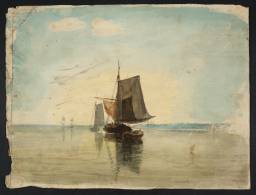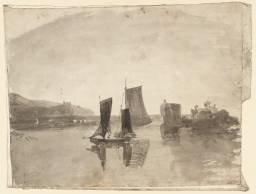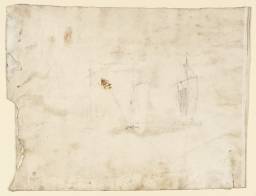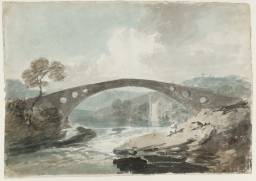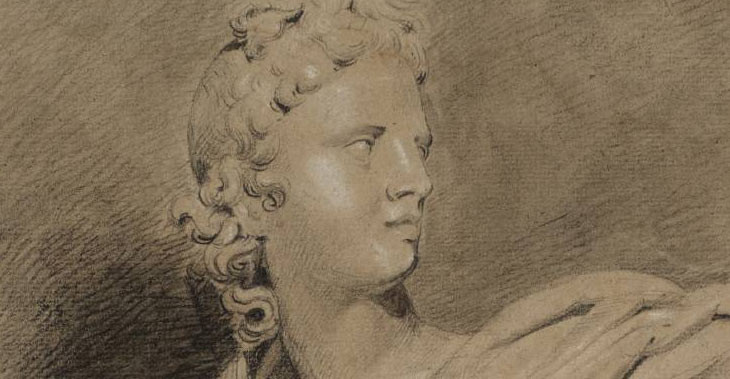Copy-Drawings for Pupils and Similar Works c.1794–8
From the entry
Turner seems to have begun working as a drawing master in 1793, and continued to earn money by that means through most of the 1790s. An early reference to this activity occurs in the Marford Mill sketchbook (Tate D00280; Turner Bequest XX 17), where a ‘Major Frazer’ is recorded as taking eight lessons; some other pupils are listed in the Small South Wales sketchbook (Tate D00462; Turner Bequest XXV 1). He seems to have charged between five and ten shillings for each lesson; Joseph Farington mentions five shillings (28 November 1798) and seven shillings and sixpence (12 October 1799). On the latter date he recorded that ‘His practice was to make a drawing in the presence of a pupil and leave it for Him to imitate’, a method that, as Joll notes, he continued to use all his life. There is a well-known instance of his making a sequence of explanatory drawings for H.A.J. Munro of Novar (1797–1864) when they were travelling together in Switzerland in 1836. His responsibilities ...
D00677, D00680, D00843, D00844, D00847–D00849, D00851–D00855, D00857, D00858, D00860, D00862, D00864, D00865, D00868–D00870, D00881, D01904, D01905, D36627, D40056, D40060, D40251, D40336–D40339, D41450, D41457, D41458
Turner Bequest XXVII P, S, XXXI A, B, E–G, I–M, XXXII A, B, D, F, F v, H, I, L–N, XXXIII J, XLIV b, c, CCCLXXIX 3, 3 v
Turner Bequest XXVII P, S, XXXI A, B, E–G, I–M, XXXII A, B, D, F, F v, H, I, L–N, XXXIII J, XLIV b, c, CCCLXXIX 3, 3 v
References
Turner seems to have begun working as a drawing master in 1793, and continued to earn money by that means through most of the 1790s. An early reference to this activity occurs in the Marford Mill sketchbook (Tate D00280; Turner Bequest XX 17), where a ‘Major Frazer’ is recorded as taking eight lessons; some other pupils are listed in the Small South Wales sketchbook (Tate D00462; Turner Bequest XXV 1). He seems to have charged between five and ten shillings for each lesson; Joseph Farington mentions five shillings (28 November 1798) and seven shillings and sixpence (12 October 1799).1 On the latter date he recorded that ‘His practice was to make a drawing in the presence of a pupil and leave it for Him to imitate’, a method that, as Joll notes,2 he continued to use all his life. There is a well-known instance of his making a sequence of explanatory drawings for H.A.J. Munro of Novar (1797–1864) when they were travelling together in Switzerland in 1836.3 His responsibilities as a Royal Academician after 1802, together with the income he enjoyed as a leading artist of the period, obviated the need for such work, though he continued to give lessons on an occasional basis, usually to friends.
One method of teaching was to make simple watercolour or monochrome wash drawings of imaginary compositions, or scenes loosely based on topographical views, which incorporated the principles of picturesque design and could be readily copied. These drawings and the copies made from them could be sent by post between teacher and pupil in what was effectively a ‘correspondence course’; the paper on which they are drawn has frequently been folded, probably for this reason. Some, like Tate D00860 (Turner Bequest XXXII D), have inscriptions indicating that they had been lent by Turner to other people. A group of these drawings, perhaps the majority of them, appear to have been made for the benefit of Miss Elizabeth Davies and possibly other members of her family, at Lewisham; see Tate D00868 (Turner Bequest XXXII L). Another subject, Tate D00849 (Turner Bequest XXXI G), is inscribed ‘Lewisham’ and can be related to subjects in Turner’s Wilson sketchbook (Tate; Turner Bequest XXXVII).
There are many examples of Turner’s ‘copy-drawings’ in the Bequest, and some which appear to be pupils’ efforts, sometimes touched by Turner himself as part of the teaching process. The sheets in this group were for obvious reasons subject to considerable wear and tear, and are often in poor condition. Drawings in the Bequest which are considered to be entirely the work of pupils are catalogued as such elsewhere. An example of a wash drawing by a pupil, the Rev. Robert Nixon of Foot’s Cray, Kent, sent by post with an accompanying letter of explanation and comment by Turner, is in the Tate Archive (TGA 941/1).
How to cite
Andrew Wilton, ‘Copy-Drawings for Pupils and Similar Works c.1794–8’, April 2012, in David Blayney Brown (ed.), J.M.W. Turner: Sketchbooks, Drawings and Watercolours, Tate Research Publication, December 2012, https://www

